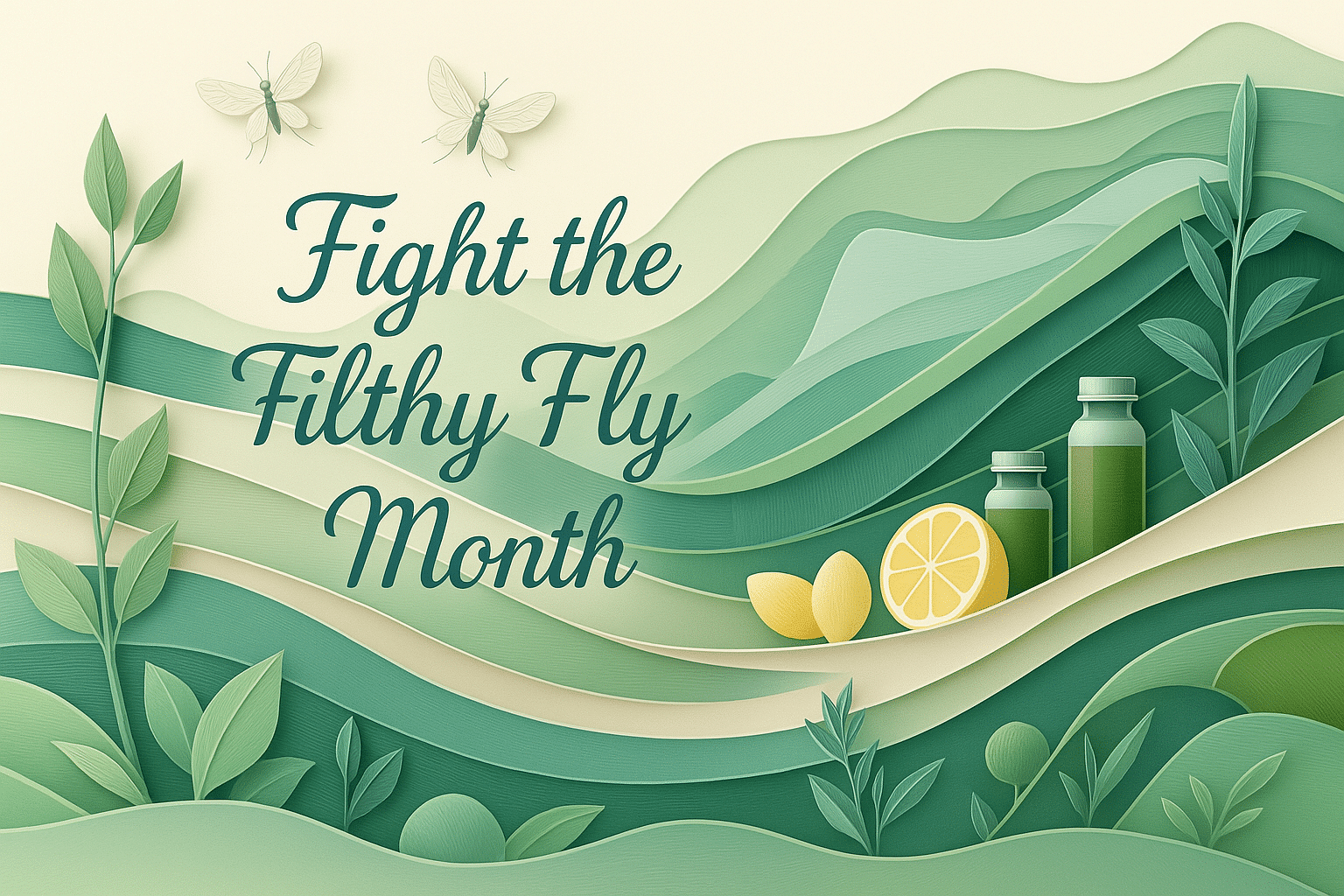What is Fight the Filthy Fly Month?
Fight the Filthy Fly Month is observed every year in June in the United States. The month focuses on raising awareness about the health dangers linked to flies and promotes effective ways to reduce their presence. Flies are more than just annoying. They can carry bacteria and spread disease in homes, restaurants, farms, and public places.
This observance encourages action. From simple home habits to community cleanups, everyone can contribute. Fight the Filthy Fly Month is a reminder to take hygiene seriously and to protect our food, families, and spaces from these disease-carrying pests.
History and Origin
The origin of Fight the Filthy Fly Month is practical rather than symbolic. Health agencies and pest control organizations helped shape the campaign to highlight just how dangerous flies can be. Flies are known to transmit dozens of diseases, including salmonella, E. coli, typhoid, and cholera.
This month was launched to coincide with the start of summer, when warmer weather increases fly activity. It also aligns with outdoor events, food festivals, and picnic season ; moments when proper fly control becomes essential. The goal is not just to swat away the problem, but to stop it at the source through awareness and prevention.
Who participates in Fight the Filthy Fly Month?
- Homeowners and renters: Keep kitchens and trash areas clean to avoid infestations.
- Restaurant and food vendors: Maintain strict hygiene to keep flies away from food.
- Farmers and gardeners: Manage waste and compost to control fly breeding sites.
- Public health departments: Run campaigns to educate people about fly prevention.
- Schools and communities: Teach children and families how to stay clean and safe.
Slogans and Themes
Common slogans include “Keep it Clean, Keep Flies Away,” “Clean Spaces, Healthy Lives,” and “Don’t Let Flies Take Over.” The themes focus on prevention, responsibility, and simple steps that make a big difference. Flies thrive in filth, so the message is clear: eliminate their habitat and they will disappear.
Colors, Symbols, and Patterns
Colors
- Yellow: Used to signal caution and attention.
- Green: Represents freshness, cleanliness, and good hygiene.
- Gray: Symbolizes the pest itself, often used in warnings and illustrations.
Symbols
- Fly swatter: A simple but powerful image used in posters and educational materials.
- No fly zone sign: A strong symbol for keeping spaces safe and clean.
- Magnifying glass with fly: Often used to represent public health surveillance.
Patterns
- Cleaning icons: Soap, spray bottles, and trash bins often appear in designs.
- Fly silhouettes: Help with quick visual recognition and education.
- Barrier lines and circles: Indicate restricted or protected zones in graphics.
Most Used Hashtags
- #FightTheFilthyFlyMonth
- #FlyFreeJune
- #NoMoreFlies
- #CleanLiving
- #StopTheSpread
How do you celebrate Fight the Filthy Fly Month?
- Clean your space: Focus on kitchen counters, sinks, and trash bins.
- Seal your food: Keep food covered indoors and outdoors.
- Use natural repellents: Plant herbs like mint, basil, and lavender near windows.
- Teach children: Help kids understand why flies are dangerous and how to prevent them.
- Fix screens and doors: Repair small gaps where flies can enter.
Why is Fight the Filthy Fly Month important?
Flies are more than a summertime nuisance. They land on food, garbage, and even feces, picking up germs that they carry into homes and restaurants. Just one fly can contaminate food and lead to illness. That makes prevention more than a chore. It is a public health necessity.
This month reminds us that small actions matter. A clean kitchen, a sealed trash bin, or a repaired screen door can all prevent larger problems. Through awareness and daily habits, everyone can help reduce fly populations and protect the people around them.
